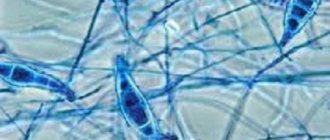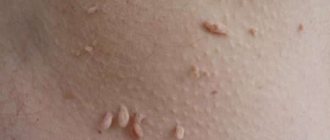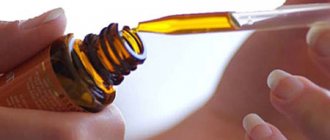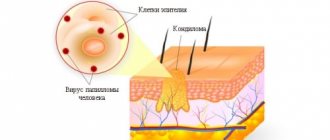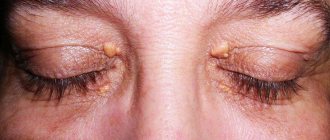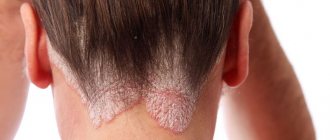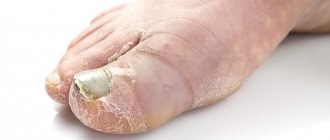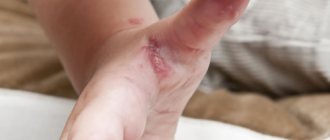Common or vulgar wart - description
90% of the world's inhabitants are carriers of papillomavirus. For some, it may remain inactive throughout their lives, while there are those who cannot get rid of warts. Most often, ordinary papilloma can be observed on the skin, which is caused by varieties of viral organisms numbered 7, 10, 12, 14, 15, 17, 19-24, 26, 27, 29, 55.
Papillomas of the vulgar type manifest themselves on the human body due to the following external characteristics:
- round or hemispherical shape;
- the color is slightly darker than flesh or brown;
- rises above the level of the skin by 2-4 millimeters;
- has an even and smooth structure, soft consistency;
- attached to the human body thanks to a special leg.
This problem can occur in the arms, legs, back, face and neck. Some people confuse these benign growths with moles, but in fact, the two concepts are completely different.
This problem does not have any noticeable symptoms; warts of this type have a very low level of oncogenicity and do not necessarily require removal. If a person has the desire, he can remove the growth through the use of laser therapy, freezing with liquid nitrogen, special patches, or standard surgery.
Types of papillomas according to the nature of localization
There are many papilloma viruses, and they differ in location. Such a tumor can form on any area of the human body. Often the tumor is observed in the following areas of the body:
- breast;
- throat;
- language;
- Cervix.
Breast papilloma is a neoplasm that can appear in the milk duct. Such processes can be accompanied by rather negative changes and physiological sensations. The main symptoms include:
- redness in the nipple area;
- bloody issues;
- burning;
- significant pain.
Initially, a papilloma formed in the breast area does not manifest itself in any way, but if not treated in time, it can develop into a malignant neoplasm.
Papilloma in the throat is a pathological neoplasm on the mucous membrane of the throat. Often such manifestations in the throat do not have any symptoms. Only occasionally the patient may feel some discomfort. As papilloma spreads, the patient may be concerned about the following manifestations:
- difficulty swallowing;
- sensation of the presence of a foreign body;
- painful sensations.
As the infection spreads, the growths in the throat become more and more numerous. As a result, the voice may even change. There can be many reasons for such a problem. Most often, such neoplasms occur in cases of weakened immunity. To quickly eliminate the problem, the use of complex therapy will be required. Initially, all papillomas located in the oral cavity are eliminated, and then the doctor prescribes drug therapy.
Papilloma, which forms in the cervical area, is a warty growth with rather uneven edges, located on the mucous membrane of the uterus. Such a pathological process may be oncogenic in nature. If therapy is not carried out in a timely manner, then the occurrence of a malignant neoplasm is quite possible. Infection occurs mainly through sexual contact, but the infection can also be transmitted during pregnancy, in which case the child will be born infected. Symptoms of such a neoplasm are:
- inflammation of the lymph nodes;
- burning in the genital area;
- various types of discharge.
Therapy for cervical papilloma involves excision of wart processes and the use of medications.
White papillomas, which are considered a dangerous neoplasm, form mainly on the face and mucous membranes, and on the tongue.
Description of filamentous warts
The types of papillomas can tell us which genotype of the viral organism is causing the problem. Quite often, filamentous warts can be found on the neck or face area. They are quite small, located on a long stem and practically do not cause discomfort. The characteristic features of papillomas of this particular type are:
- quite small, almost tiny in size;
- the leg is long and very thin, which resembles a thread;
- flesh or light brown color;
- Quite soft and pleasant texture.
Filiform warts can appear on the eyelid, neck, and near the mouth. If they grow on another part of the body, then there is nothing strange, because the human papillomavirus can look completely unexpected. Threaded papillomas are also called anronorades and doctors do not give clear recommendations for their removal. When a problem of this particular type occurs, there are no clear recommendations regarding removal.
Treatment of human papillomavirus
Regardless of which treatment method is chosen for a particular patient, the doctor always prescribes antiviral medications. They are taken in small courses so that the virus weakens and enters the hibernation stage.
Tablets for papillomas are taken according to an individually selected regimen; sometimes antiviral drugs are prescribed in the form of ointments or rectal suppositories. After using such medications, it is possible to consolidate the result obtained after cutting off tumors and prevent relapse of the disease in the future.
Vitamin complexes are also additionally used, which are taken in courses of one month. They increase the patient’s immunity and enhance the effects of antiviral drugs. Vitamin complexes are also taken as a preventive measure 2-3 times a year.
External products in the form of burning emulsions or solutions are not recommended for use on the face and neck, since the skin in these areas is very sensitive. In addition, such emulsions can accelerate the development of the virus and its symptoms if incorrect dosages and courses of treatment of inappropriate duration are used.
Traditional methods for papillomas are strictly prohibited. They have a negative effect on the skin, which only strengthens the papillomavirus, and can also provoke the transition of a benign process to a malignant one.
Hardware medicine
Papillomas cannot be torn off or affected by any mechanical methods unless they are of a medical nature. The reasons for the appearance of tumors on the human body do not play any role in the selection of hardware treatment.
You can remove shoots using several hardware methods.
- Laser treatment. It is considered one of the most effective methods for eliminating papillomas. The laser allows you to cut out tumors localized at any depth, the wound is immediately baked, which avoids even minimal bleeding. Scars rarely remain; this usually happens after treating large areas of the lesion. After the procedure, the skin recovers in approximately 3-5 weeks, taking into account the sensitivity of the patient and the degree of ingrowth of papillomas.
- Cold treatment. This procedure is called cryotherapy. It involves exposing the sore spot to liquid nitrogen, which causes rapid death of pathological tissue. Liquid nitrogen leaves no scars, the skin is restored in a short period of time.
- Surgery. It involves the use of a regular scalpel, with which the doctor cuts off pathological tissue. Surgical treatment is rarely used when it comes to a possible malignant process. Then the cut papilloma is sent for microscopic examination to confirm cancer or its absence.
- Diathermocoagulation, or electrocoagulation. It involves exposing the resulting tumor to high-frequency current. It cauterizes the pathological tissues and they fall off. Requires a fairly long recovery period for the skin and may leave a scar.
- Radiosurgery. A very popular, but high-priced method. It is carried out using a radio knife, which cuts off diseased tissue and causes rapid healing of wounded skin. Does not leave any traces after restoration of the epidermis. Radiosurgery does not cause pain and almost eliminates the reappearance of papillomas in the treated area.
Dermatologists and venereologists insist that you cannot decide on your own whether benign tumors need to be removed after they appear. Papillomas are always a reason to consult a specialist to select the optimal treatment method.
In a particular case, the doctor may decide to use medication for the growth. Medicines for papillomas are often used when the number and size of tumors are small and in the absence of malignant processes in them.
Drugs
Treatment of papillomas depends on their location, etiology and form of HPV. Almost always, the removal of the shoots is carried out initially. If the nature of the localization allows, then papillomas are removed with liquid nitrogen.
Also in modern medicine, the radioknife method is used. Thus, painless removal of not only the process itself, but also its root system is carried out on the body. This method makes it possible to completely and permanently remove papilloma in this area of the body.
The above method is very often applicable in case of relapse of the disease in a person. Especially if a person tried to remove the formations on his own at home.
In addition, surgical removal of papillomas on the body is possible using the following methods:
- electrocoagulation;
- laser removal;
- removal with a surgical scalpel.
In some cases, if there is no oncogenic factor, a local papilloma ointment can be used. Such a substance can only be prescribed by a doctor, after accurately determining the etiology of the disease. At the initial stages of the development of the disease, ointment for papilloma gives good results, even when used at home for treatment.
In any case, treatment of papilloma should be accompanied by drug therapy. But it is important to remember that there is no specific cure for papillomas. The doctor prescribes general-spectrum antiviral drugs. Therapy is also aimed at strengthening the immune system.
Treatment of papillomas at an early stage of development in most cases does not cause serious complications. But, this is only if HPV is not recognized as oncogenic.
Treatment of papillomas at home, without a doctor’s prescription, is unacceptable. Thus, you can only aggravate the situation and give rise to the growth of infection throughout the body.
At home, treatment is possible only if the diagnosis does not reveal an oncogenic factor or suspicion of the formation of a malignant tumor.
In general, treatment at home means using local ointments and taking medications prescribed by a doctor. If HPV is not regarded as a precancerous condition, then hospitalization is not carried out.
Please note that self-treatment at home can lead to papillomitosis of the skin. In this case, papilloma formations will appear throughout the body. Therefore, treatment at home is only possible as prescribed by a competent specialist.
Only a competent specialist can tell you how to treat papillomas correctly. You should not self-medicate, trust advice from the Internet and “grandmother’s” methods without consulting a doctor.
Treatment for HPV must be mandatory.
Modern medications are not able to completely remove the virus from the body, but they are necessary in order to transfer the pathogen to a dormant state in which there is no infection and no diseases develop.
Papillomas on the body are removed using different methods; in addition, several groups of drugs are used to reduce viral activity.
How do they withdraw?
Papillomas on the body are removed by conventional surgery, using a laser, electrocoagulation, or radio wave therapy. The choice of method for cutting off a papilloma depends on its location, size, number of formations, and the presence of a stalk.
Drug treatment consists of a course of use of the following groups of drugs:
- Antiviral agents that can stop the reproduction of the virus. These are Izoprinzin, Allokin alpha, Groprinosin.
- Vitamin complexes.
- Immunity enhancing agents.
The course of treatment with human papillomavirus drugs can be repeated several times based on the results of the analysis. The goal of antiviral therapy is to completely suppress HPV activity.
Folk remedies
In addition to basic therapy, traditional medicine can be used. You can prevent further growth and, in some cases, destruction of papilloma by lubricating these growths with celandine juice, castor oil, dandelion juice, garlic and sour apple.
Naturally, such removal of papillomas will take a lot of time and is effective in most cases when combined with the simultaneous use of antiviral drugs.
Flat papillomas - main characteristics
Flat warts are a fairly common type of papillomas, which most often occurs at a young age.
Small flat warts are observed on the body of adolescents and over time they disappear on their own. The likelihood of a flat-shaped neoplasm appearing at an older age is also quite high, because the problem is caused by virus varieties numbered 43, 55, 53 and some others. In terms of appearance, this problem has the following characteristics:
- practically does not protrude above the skin level or the elevation is minimal;
- flesh or light brown tint;
- most often appears in a single variant;
- does not cause any discomfort, can have a minimal or quite large size.
Such a problem only causes visual discomfort, because they do not cause any special problems for concern. The doctor may prescribe antiviral therapy, which is caused by taking antiviral medications. If a person with a flat wart experiences visual discomfort, then the papilloma can be removed surgically, laser or cold cauterization.
Pointed papillomas or condylomas
Pointed papillomas are considered the most dangerous for humans. They are caused by viral organisms numbered 31, 33, 35, 39, 45, 51, 59, 70, 30, 39, 55, 57, 67, 69. Such formations have a very high oncogenic level and most often appear in the intimate areas of men and women.
The external features of condylomas that arise as a result of the activity of the human papillomavirus are considered to be:
- cone-shaped growths, different size indicators;
- quite high elevation above the level of the skin;
- the presence of a wart is not isolated;
- a significant number of papillomas create a formation that in appearance is very similar to cauliflower;
- formation not only on the skin, but also on the mucous membranes;
- flesh-colored, light brown or pink.
The appearance of these growths in the intimate area causes a lot of discomfort. A person feels constant itching, feels unpleasant during intimacy, and may have a not very pleasant smell.
If a problem is identified in a woman, she will be offered screening. Treatment of the problem will directly depend on what specific diagnosis the doctors make. If the formations have already become malignant, then surgery is performed and chemotherapy is used. If such a serious diagnosis is refuted, patients are still recommended to remove the growths and undergo antiviral therapy.
Where do papillomas appear?
Photos of papillomas on different parts of the body
Benign neoplasms caused by the human papillomavirus come in different shapes, sizes and oncogenicity. They appear on the skin throughout the body.
Most often, papillomas form in the following areas:
- Face . Pointed growths are localized mainly on the eyelids and lips, flat ones can be found on the cheeks. This type of papillomas most often brings people to a dermatologist and cosmetologist, since aesthetically unattractive tumors on other parts of the body can be hidden with clothing, and the face is always open.
- Neck, armpits, area under the chest . These places are characterized by the growth of hanging filamentous papillomas. More often they form in women during pregnancy and breastfeeding and in older people.
- Soles of the feet . They are localized on the roughened areas of the feet, namely on the heels and the keratinized part of the skin of the fingers. Such growths are called spines. They cause discomfort when walking, as they grow inside the epidermis and not outside. Read about treatment methods for plantar papillomas.
- Fingers, toes . This is the favorite habitat of warts vulgaris. They are called the most harmless and most treatable. This type of papillomas is most common in children.
- Genital skin . Thread-like and flat papillomas are most often found here. In men they form on the head of the penis and on the scrotum, in women - on the labia and clitoris. Regardless of gender, neoplasms are also localized in the anus.
- Whole body. In this case, you can observe a concentration of dozens, and sometimes hundreds of growths nearby. May occupy the area of all limbs, most of the back or abdomen. This type of skin lesion is called papillomatosis. It may represent a concentration of any type of tumor caused by HPV.
Plantar warts - main characteristics
Some HPV genotypes cause warts on the soles of the feet and palms of the hands. They often resemble ordinary calluses and are quite painful.
The main characteristics of problematic formations of this type include the following external manifestations:
- the color of the growths practically does not differ from the color of the skin;
- protrude slightly above the skin level;
- often resemble a small nodule on a stalk and have some mobility.
Discomfort from growths occurs only because they appeared in such an area. Because of the extra formation, it hurts for a person to step completely on the foot, and if the papilloma is on the arm, then there is a lot of discomfort while performing some kind of work. It is imperative to remove such growths, because they can be very easily damaged, which often leads to blood poisoning.
Plantar warts have a low oncogenic level, but are quite dangerous due to the fact that they are easily damaged without even noticing it. With this problem, you need to carry out antiviral therapy, remove the growth surgically, with a laser or liquid nitrogen. After the operation, a small wound remains, but it heals completely within a few days.
Additional Information
In nature, there are about 150 varieties of papillomaviruses, which cause the appearance of warts of various shapes and sizes on the skin. Papillomas are divided into types depending on what strain of HPV the person was infected with.
People may develop warts of various types and sizes only after the body is severely weakened, and if they notice such formations on the skin, then it is worth remembering and taking into account the following information:
- genital papillomas or condylomas that gather together always have a very high level of danger;
- when warts appear on the soles of the feet, mucous membranes, palms, even if they are a safe variety, they should be removed without fail;
- You should not try to cut off warts of each type on your own, because this risks relapse and infection of the entire body.
Each human body has its own characteristics, which also affects exactly how the human papillomavirus can manifest itself.
If a person notices a certain type of wart on the body, its description is similar to one of the specified varieties, then you should immediately consult a doctor.
When a formation does not fit the above descriptions, it should not be ignored either, because it can still be caused by HPV.
Why does this problem exist for almost every person? Experienced doctors have not yet been able to identify it in detail, but specialists have learned to competently treat both external manifestations and the original source of the problem. The external problem of each type is a reason to visit a medical specialist. This cannot be ignored, because everything can end very seriously.
Removal of skin lesions
Depending on the size and type of tumor, the doctor may choose one of the existing methods for removing papillomas. The most popular of them are removal with liquid nitrogen, laser, radio waves and electrocoagulation.
The method of freezing a tumor using liquid nitrogen is called cryodestruction. During this procedure, due to the low-temperature properties of nitrogen, the tissues and vessels around the tumor are frozen, as a result of which it becomes necrotic and separated from the surface of the skin. If it has deep roots, several cryodestruction procedures may be necessary. As a rule, this procedure is painless.
Cryodestruction of papillomas
Electrocoagulation is a method of exposing papilloma to electric current, as a result of which its blood supply is stopped and small vessels around the tumor are coagulated. This procedure stops the spread of the virus.
Laser removal is the most effective and painless method today. As a rule, one procedure is enough to remove the tumor. Under the influence of a laser beam, the papilloma cells dry out, and it takes on the appearance of a scab. A few days after the procedure, this crust will disappear.
The radio wave surgery method is no less effective than laser removal; it involves removing papilloma using radio waves. After such an effect on the tumor, no traces remain on the skin. The injury site heals very quickly. The disadvantage of this method is its high cost.
